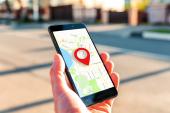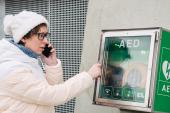Even When Nearby, Public AEDs Get Little Use in OHCA
Bystander use was zero in at-home OHCAs and < 20% in public, even when an AED was less than a 1-minute walk away.

Having automated external defibrillators (AEDs) in public spaces is no guarantee that they will be used, with a new study showing that less than 10% of out-of-hospital cardiac arrest (OHCA) situations in the United States involve a bystander locating and using them.
“I think it just highlights that there's more work that needs to be done,” said Mirza S. Khan, MD (University of Missouri-Kansas City), who led the study.
He likened the presence of AEDs in public places to having infrastructure like roads that can only be used if they also contain street signs, house numbers, and other user friendly things to allow people to navigate and make the most of them. Khan said that in addition to showing the need for improved education and awareness initiatives around the use of AEDs, his study may help with identifying “hot spots” where prior cardiac arrests have occurred in public spaces, with the aim of improving deployment and accessibility.
Several Nordic countries including Sweden have much higher rates of bystander AED use than the United States and are examples of how innovative solutions can improve the current situation, Khan told TCTMD, but it’s not likely to happen overnight.
“They've done a few things that I think work extremely well and a lot of that is just paying dividends now,” he added.
Julie B. Damp, MD (Vanderbilt University Medical Center, Nashville, TN), who moderated a consumer web briefing where Khan presented the study results ahead of the American College of Cardiology 2024 Scientific Session, said the lack of utilization of AEDs was “striking” given how important they are as a resource in cardiac arrest cases.
Zero Use of AEDs in At-home Arrests
For the study, Khan and colleagues calculated walking times to public AEDs from OHCAs reported in the Cardiac Arrest Registry to Enhance Survival (CARES) in Kansas City from 2019 to 2022, as well as rates of bystander CPR and AED use by walking time distance to an AED.
Among the 1,799 cases of OHCA, 84.5% occurred at home, while 15.5% occurred in a public place or commercial building.
For cardiac arrests occurring in a home, 42% of cases involved bystander CPR, but use of a public AED—even if it was within a 1-minute walk of the home—was zero. Among all at-home OHCAs, a public AED was available within a 4-minute walk in approximately 24%.
Among cardiac arrests that occurred in public, nearly 48% were within a 4-minute walk of a publicly registered AED. However, even when an accessible AED only a 1-minute walk away, the rate of bystander use was just 16.7%.
I think these are lessons that we need to learn and not be discouraged by some of the results that we're seeing here. Mirza S. Khan
To TCTMD, Khan said one of the keys to better utilization of bystander AED in OHCA is “fostering a culture where bystanders have that knowledge and familiarity with working with performing CPR, as well as familiarity with where the AEDs are located and how to use them effectively.”
But there are still challenges even with organized efforts. He pointed to the Swedish SAMBA trial, which used a smartphone app to alert trained citizens to respond to nearby OHCAs. While the intervention surprisingly did not increase the use of AEDs by bystanders, the app has previously shown potential to boost rates of bystander CPR.
“I think these are lessons that we need to learn and not be discouraged by some of the results that we're seeing here,” Khan noted.
L.A. McKeown is a Senior Medical Journalist for TCTMD, the Section Editor of CV Team Forum, and Senior Medical…
Read Full BioSources
Khan M. Walking time to closest public automated external defibrillator for out-of-hospital cardiac arrest in a major city. To be presented at: ACC 2024. Atlanta, GA.
Disclosures
- The study was funded by the National Heart, Lung, and Blood Institute.
- Khan reports no relevant conflicts of interest.





Comments